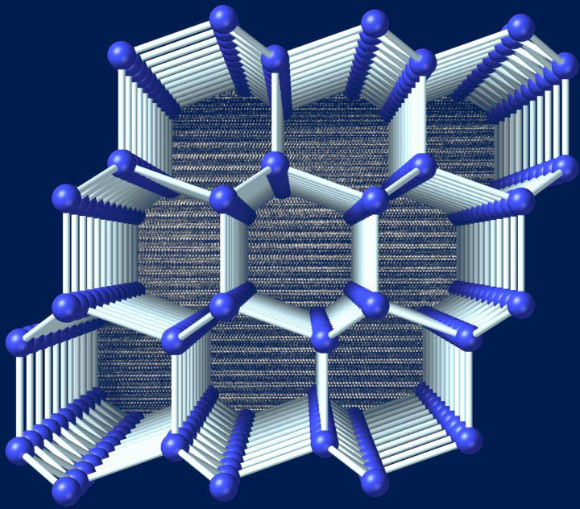
Scientists Synthesize New Crystalline Form of Silicon | Physics
A team of researchers from the Carnegie Institution for Science, RMIT University and the Australian National University has synthesized a new form of silicon with a hexagonal structure — 4H hexagonal silicon (4H-Si) — using a recently-discovered single-crystalline allotrope of silicon, Si24.Visualization of the structure of 4H-Si viewed perpendicular to the hexagonal axis. A transmission electron micrograph showing the stacking sequence is displayed in the background. Image credit: Thomas Shiell / Timothy Strobel.Silicon can take different crystalline forms, called allotropes, in the same way that soft graphite and super-hard diamond are both forms of carbon.The form of silicon most commonly used in electronic devices, including computers and solar panels, has the same structure as diamond. Despite its ubiquity, this form is not actually fully optimized for next-generation applications, including high-performance transistors and some photovoltaic devices.While many different silicon allotropes with enhanced physical properties are theoretically possible, only a handful exist in practice given the lack of known synthetic pathways that are currently accessible.Carnegie Institution for Science researcher Timothy Strobel and colleagues had previously developed a revolutionary form of silicon, Si24, which has an open framework composed of a series of one-dimensional channels.In the new work, they used Si24 as the starting point in a multi-stage synthesis pathway that resulted in highly oriented crystals of 4H-Si, named for its four repeating layers in a hexagonal structure.Interest in hexagonal silicon dates back to the 1960s, because of the possibility of tunable electronic properties, which could enhance performance beyond the cubic form, Dr. Strobel said.Hexagonal forms of silicon have been synthesized previously, but only through the deposition of thin films or as nanocrystals that coexist with disordered material.The new Si24 pathway produces the first high-quality, bulk crystals that serve as the basis for future research activities.Using the advanced computing tool called PALLAS, the scientists were able to understand the transition mechanism from Si24 to 4H-Si and the structural relationship that allows the preservation of highly oriented product crystals.In addition to expanding our fundamental control over the synthesis of novel structures, the discovery of bulk 4H-Si crystals opens the door to exciting future research prospects for tuning the optical and electronic properties through strain engineering and elemental substitution, said Dr. Thomas Shiell, also from the Carnegie Institution for Science.We could potentially use this method to create seed crystals to grow large volumes of the 4H structure with properties that potentially exceed those of diamond silicon.The research is described in a paper in the journal Physical Review Letters._____ThomasB. Shiell et al. 2021. Bulk Crystalline 4H-Silicon through a Metastable Allotropic Transition. Phys. Rev. Lett 126 (21): 215701; doi: 10.1103/PhysRevLett.126.215701
……Science
Comments
Leave a comment in Nestia App